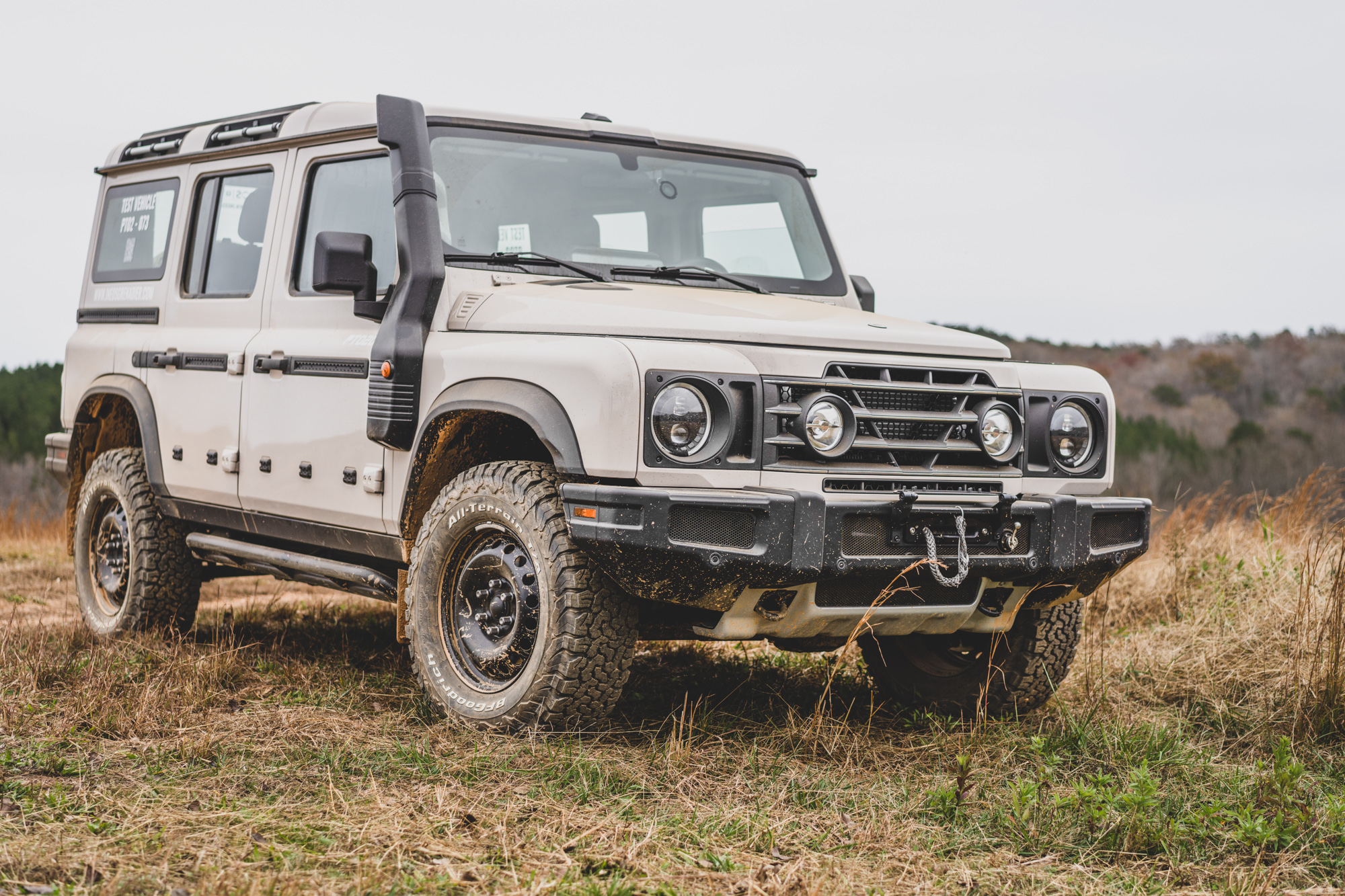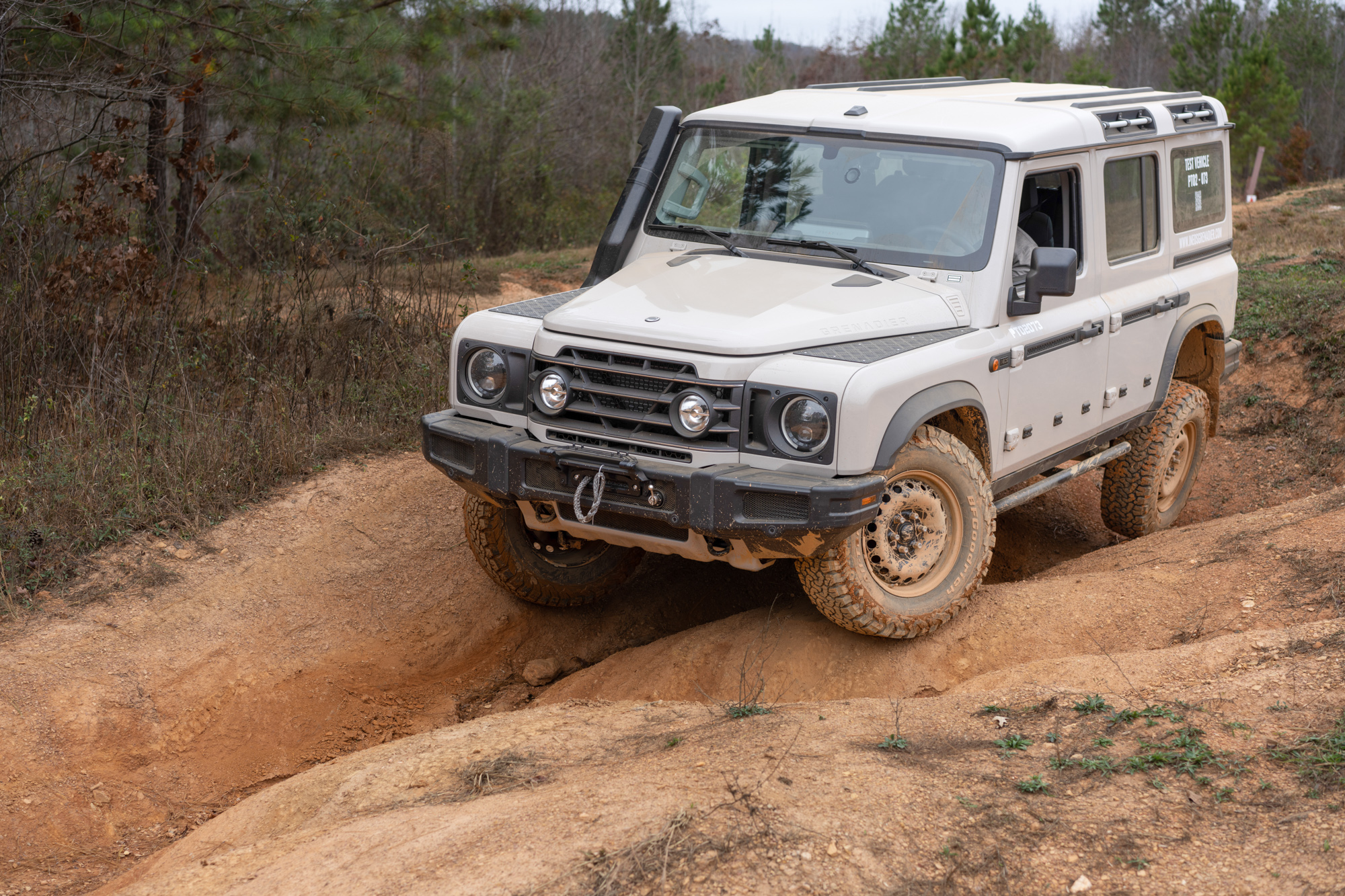Editor’s Note: We received no compensation of any kind for this exclusive North/South America test of the Grenadier Prototype.
As I drove down the dirt access road of the Uwharrie woods, the anticipation was building. We were about to be the first media outlet in the Americas to drive the new Grenadier prototype and report on it. The goal was to evaluate the off-road performance of the vehicle, and provide detailed feedback to their team and our audience. To say the Grenadier is a special vehicle would be an understatement, being the first Built on Purpose overland vehicle imported to the Americas in many decades. The intention of the Grenadier is clear, which is to support vehicle-based professionals and adventurers around the world as they access the most inhospitable and remote corners of the planet.
To evaluate such a purposeful overland vehicle, we are drawing on our unique experiences having driven all seven continents, and multiple overland circumnavigations of the planet. We literally trust our lives to our vehicles as they transport us from point A to B. The Grenadier is a project started by Sir James Ratcliffe to build an uncompromising overland vehicle he would want to drive- anywhere. Sir Jim is a passionate overlander, and has traveled around the world by 4WD and adventure motorcycle (including riding the length of Africa). When you combine passion for the product, resources, and commitment, vehicles like the Grenadier are possible.
Key Overland Features and Specifications:
- Body on frame construction
- Solid front and rear axles with differential locks
- Long-travel coil sprung suspension
- Full-time transfer case with low range
- 17 inch wheels and large wheel openings will accommodate a 33 inch+ tire
- Global drivetrain (BMW) and fuel type (Unleaded)
- Class-leading 1,700 – 2,000 pound payload
- Squared-off exterior and interior maximizes storage volume (and is long enough to sleep in).
- Minimalist interior is both comfortable (Recaro seats, etc.) and durable
- Designed intentionally for modification and customization
It is important to note that all of our impressions are of a prototype vehicle. We expect continuous improvement and development until final production.
Powertrain and Driver Inputs Impressions
For North America, the Grenadier is spec’ed with one powerplant, the BMW-sourced B58 inline 6-cylinder gasoline engine. The motor is turbocharged for performance and efficiency, the turbo also benefiting high-altitude use. Horsepower is 280 and torque comes in at a notable 405 lb. ft. When combined with the 8-speed ZF automatic transmission first gear of 5:2 and 4:1 axle gearing, the 6,000 pound Grenadier accelerates with authority on the dirt, easily managing any obstacle or condition encountered. It is also worth noting that a gasoline I6 is actually the best solution for North American overlanders, as modern US diesels require Ultra Low Sulphur and exhaust fluid. You can drive the gasoline Grenadier anywhere you find motorcycles, which is pretty much everywhere.
On higher-speed dirt roads, acceleration was also appropriate, making more than enough power for most passing scenarios or steep highway grades. It is not a sports car, but it performs comparable with all other vehicles in the category. It is also important to reinforce that an overland vehicle is best served by an under-stressed powerplant, with adequate power, but well within the engineering limits of the chassis and drivetrain. For example, the Grenadier’s ZF transmission can tolerate the torque of a V12!

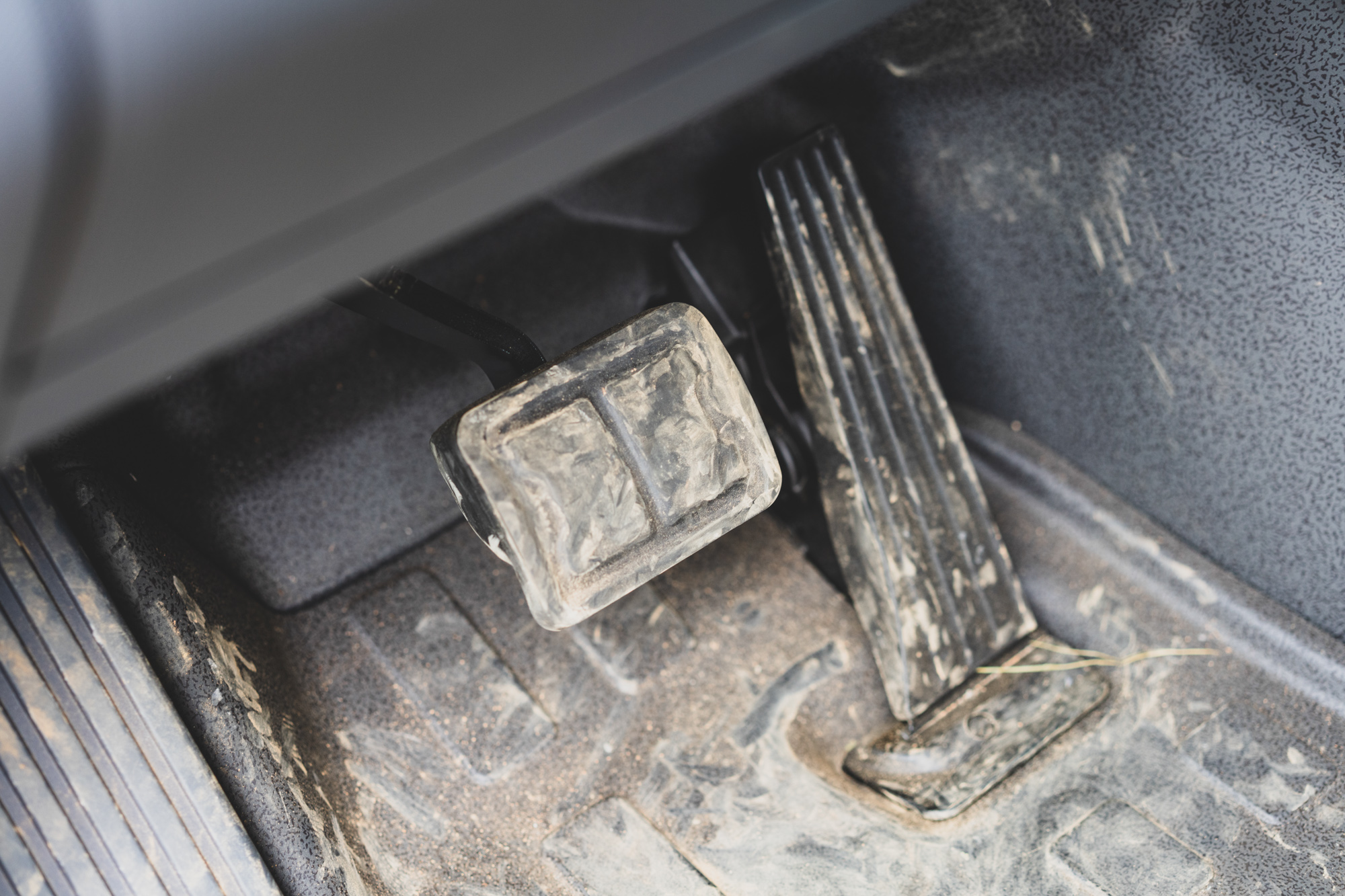
Driver inputs are via a standard BMW shifter with manual mode, and the transfer case is thankfully operated by a robust cable, allowing selection of 4 high open, 4 high locked, 4 low open, or 4 low locked. The 2.5:1 low range gives over a 50:1 crawl ratio, providing excellent slow-speed control and climbing capabilities. Another shocking delight is the manual hand brake, located on the center console, where it belongs. Initial throttle tip in is a bit more responsive than I prefer, but that is easily attenuated on the trail with left foot braking (LFB). It would also be possible for Ineos to activate a separate throttle map in offroad mode. The Grenadier tolerates LFB well, retaining traction control (TC) intervention and not cutting the throttle. I did note that intervention of the brake TC was less effective under LFB, but it still worked. TC works best in off-road mode without LFB, and of course the driver can select the optional differential lockers if conditions dictate.
On the trail, overall driver fatigue is low, with minimal head toss and supportive Recaro seats. They even paid attention to the durability of the seats, fitting manual controls to ensure serviceability (also think of what happens to electric seats in deep water fording). The seating position is also ideal for trail and travel, giving a commanding view of the obstacle ahead, and of any hazards on the road. The A and B pillars are thin (for a modern vehicle), and the window tint is light, also aiding in good visibility. Thankfully Ineos specified buttons and switches for all critical inputs, and even added a row of accessory switches in the overhead console to support lighting, compressors, etc. The steering wheel is the cherry on top, with a thick frame and adequate grip. Quick access buttons flank the airbag and there is even a “Toot” button to give a gentle warning to cyclists and pedestrians.

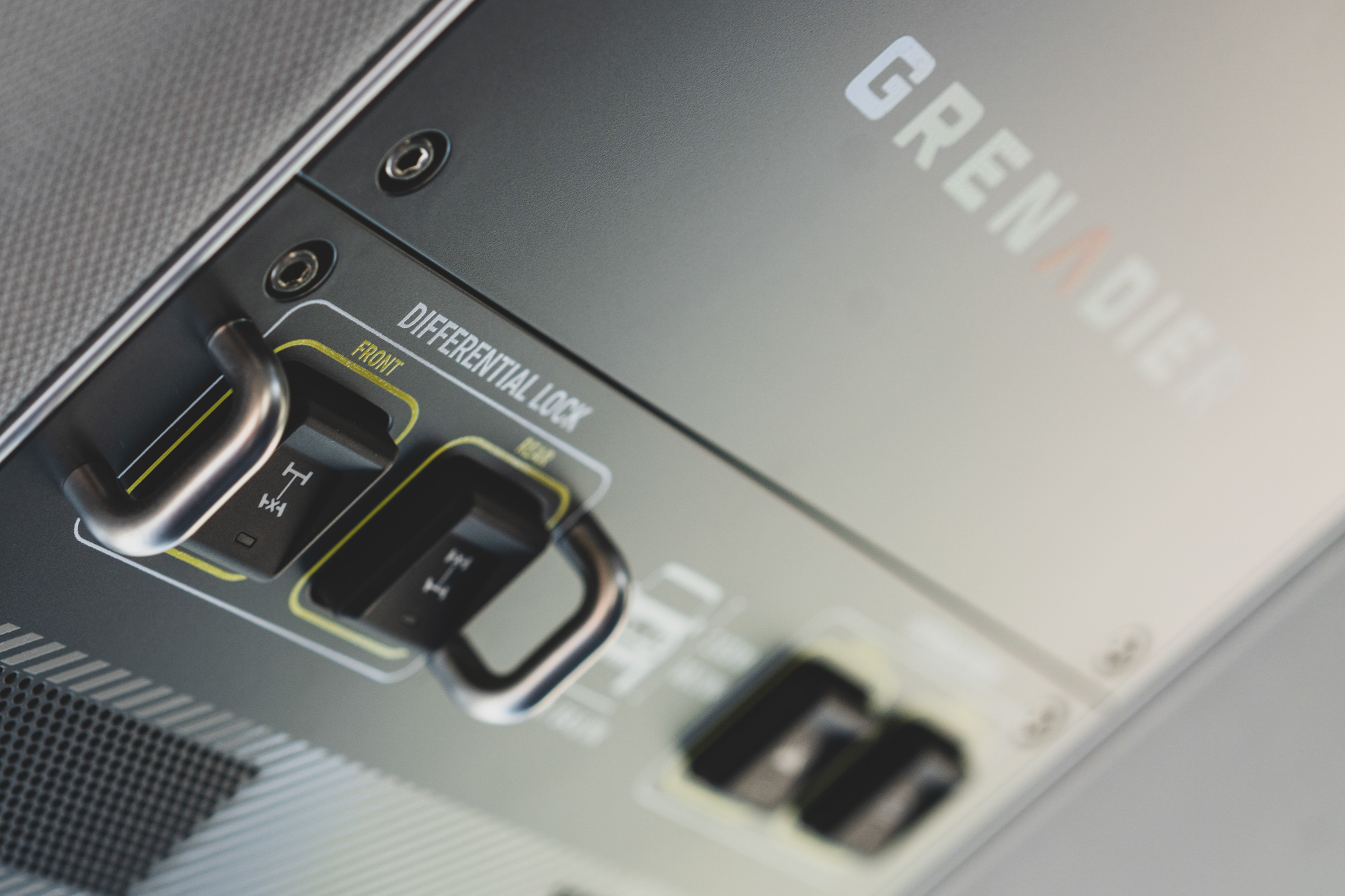
Technical Terrain (off-road) Driving
We all wanted to know how the Grenadier performs on the rocks, hill climbs, and ruts, and I can assure you that it is really good. With an ideal wheelbase of 115 inches (for comparison, Wrangler Unlimited 118”, and Gwagen 113”), 10 inches of ground clearance, and 36 degrees of approach and departure angle, the Ineos handled every stock vehicle appropriate obstacle at the testing facility without issue. The Differential locker engagement is simple, with the push of an overhead button, and the t-case locks by moving the shifter sideways. With the rear locker engaged, we climbed significant cross-axle ruts, logs, and boulders. We never needed the front locker, but tested it anyway to determine lock/unlock responsiveness.
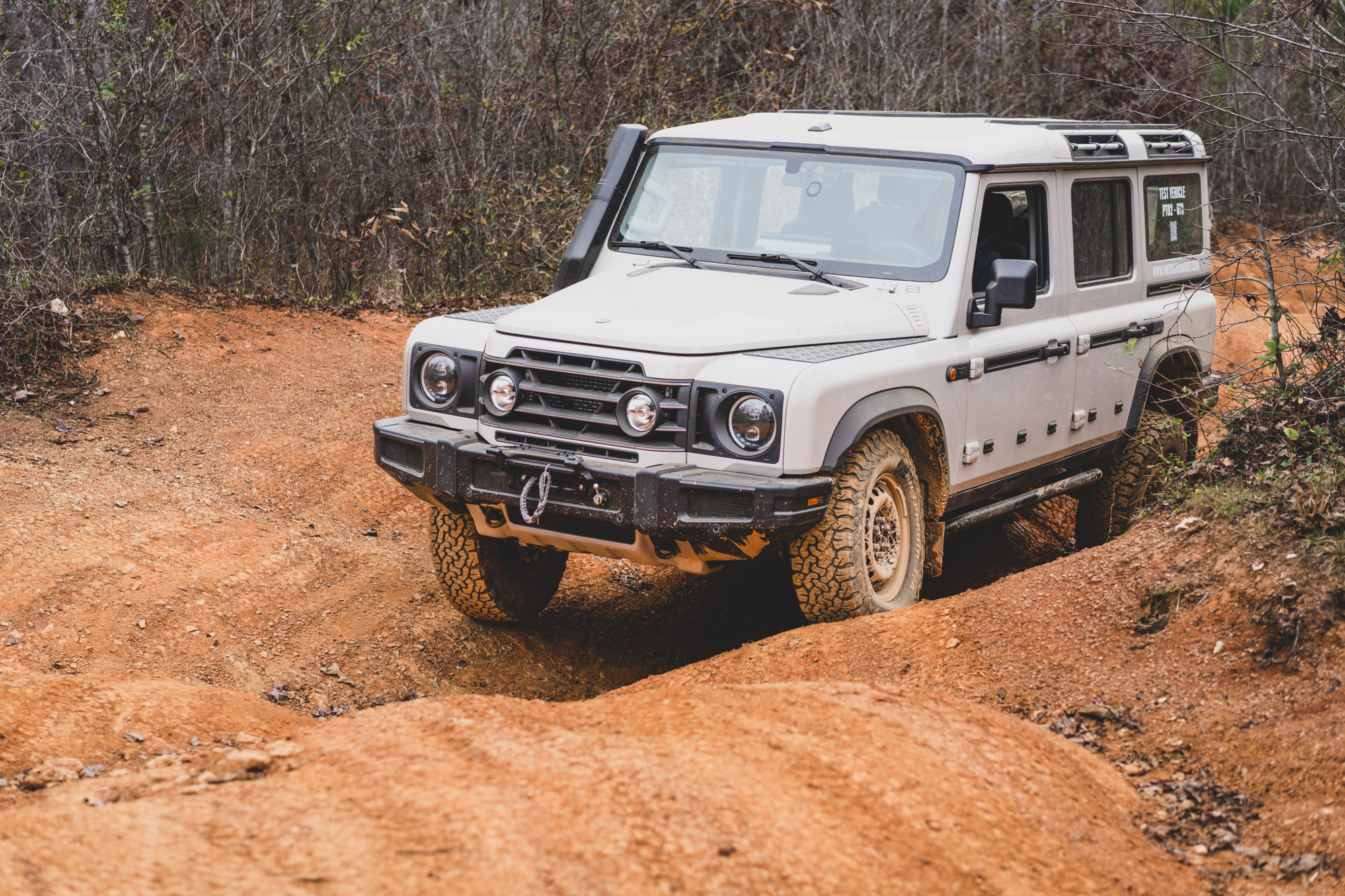
When in technical terrain, we look for vehicle stability and chassis compliance (articulation), along with how the vehicle responds while lifting a tire. Does the hood stay flat? Does the suspension pop or unload unexpectedly when a wheel lifts? Ineos and their chassis engineering team at Magna Steyr developed a stable and balanced chassis, with good weight distribution and long travel from the front and rear 5-link suspension. The hood stays flat in all but the most extreme articulation events, and the vehicle lofts a wheel predictably when it does. Overall articulation is limited by the front anti-swaybar, which is appropriate to the vehicle’s use and intended loads. If an owner wanted more articulation, the bones are there, and easily modified with aftermarket accessories. It will also be easy to fit a 255/80 R17 tire if additional clearance is needed. This particular unit was also fitted with the Ineos winch bumper and electric winch. The winch tucks in nicely and retains approach angle, but does have limited access to the line. They utilize a synthetic line and hawse fairlead, and the freespool lever is on the bumper face for easy operation.
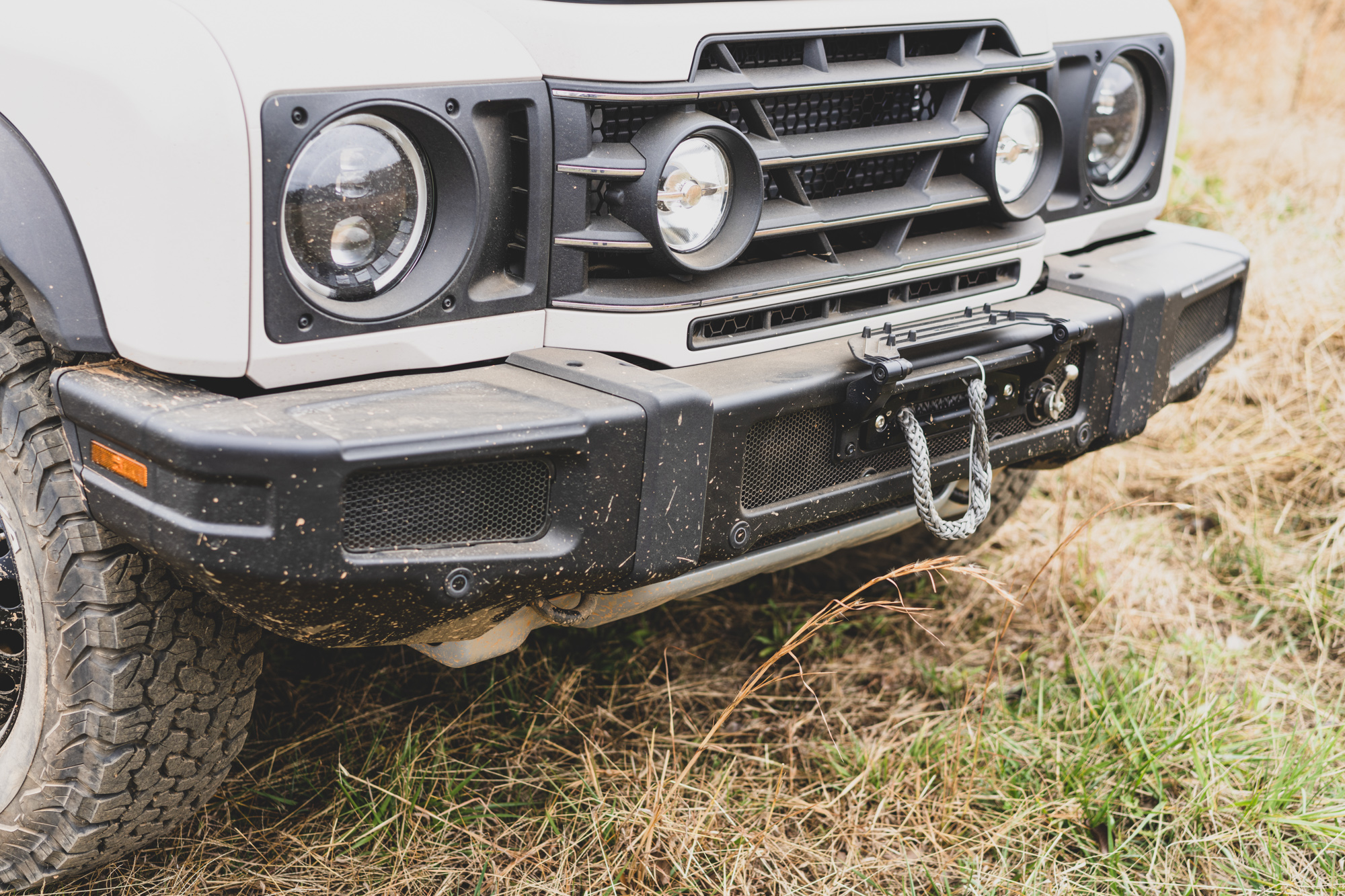
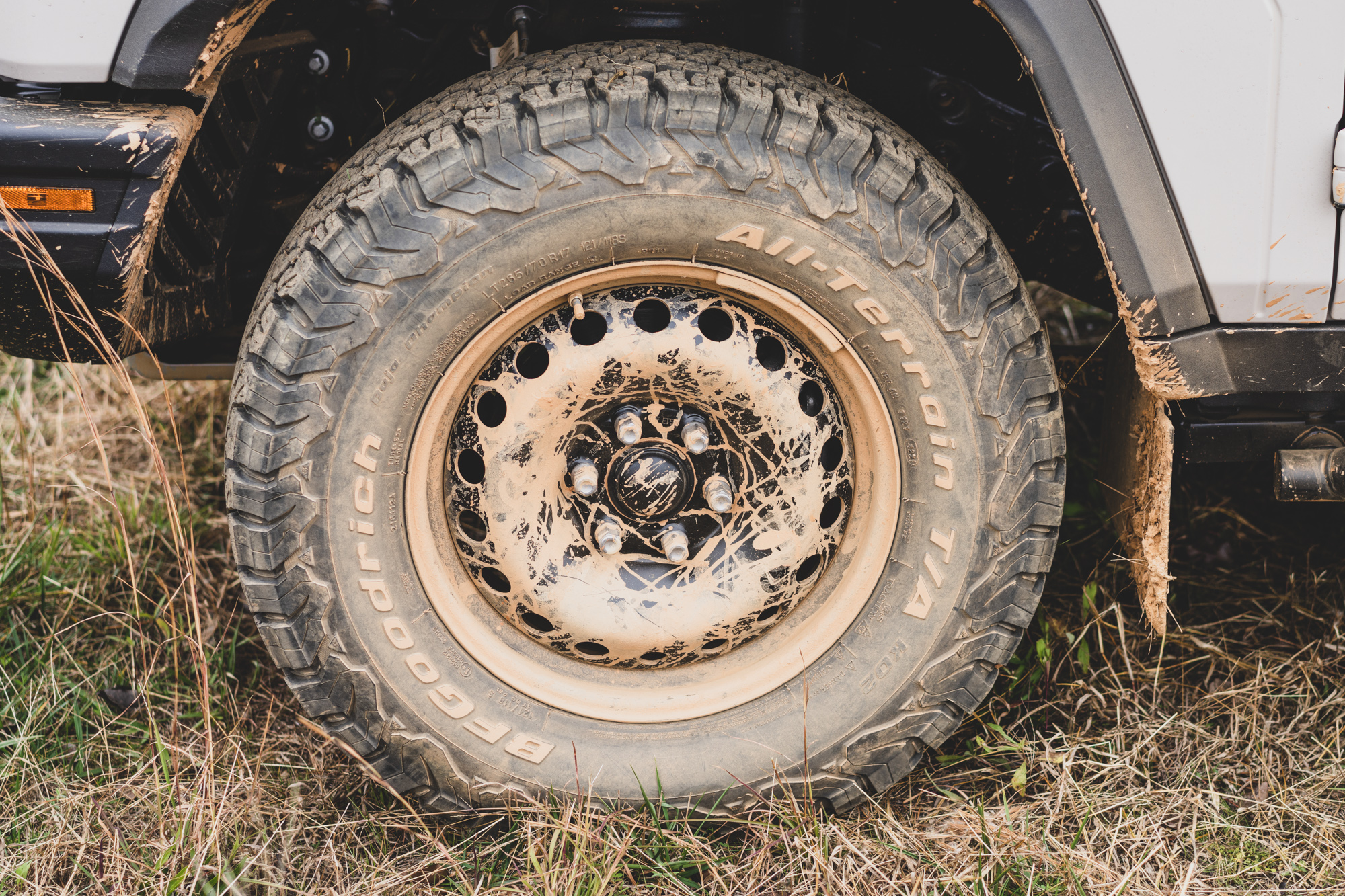
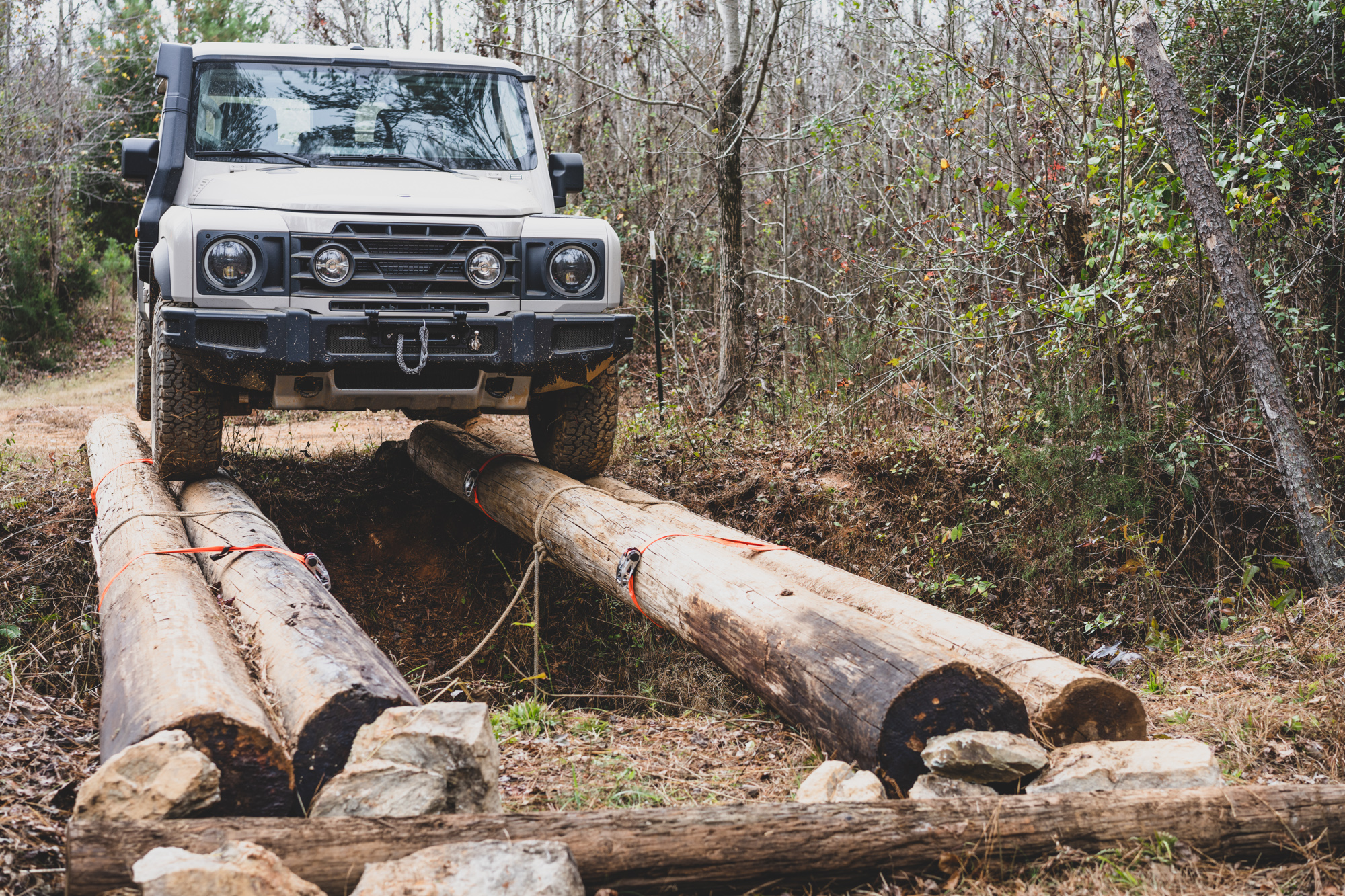
Dirt Road Driving
The majority of our time spent overlanding is on paved and dirt roads, so we evaluated the Grenadier on the faster dirt tracks of the Overland Experts NC facility. The vehicle responded well to larger events, holes, and rocks without upsetting chassis balance or stepping out unexpectedly. The steering is direct for a solid axle, but not overly boosted or with too precise of on-center feel. We do not want a high-clearance SUV to be too direct or too precise on center, as it results in a busy and fatiguing drive- the steering is just right.
I also appreciated that the vehicle noise was low, and there were no notable rattles in the cab. At several points of the test we had four full-size adults in the Grenadier, and they all had sufficient room and visibility thanks to the stadium seating. We were not able to drive the Grenadier on the road (yet), but expect it to handle similar to others in the class.
Conclusions
While this was an off-road only test, it only made us more enthusiastic for the Grenadier and its suitability for overland travel. It checks all the boxes, but it also works well as a system. When you combine its off-road capability with the class-leading payload, you are rewarded with a vehicle that is ready to take you to the remote corners of the globe, and back again. Stay tuned, as we report on our longterm testing from somewhere much more interesting. . .
Full Review Video

Sir Jim Ratcliffe
